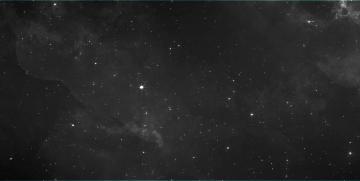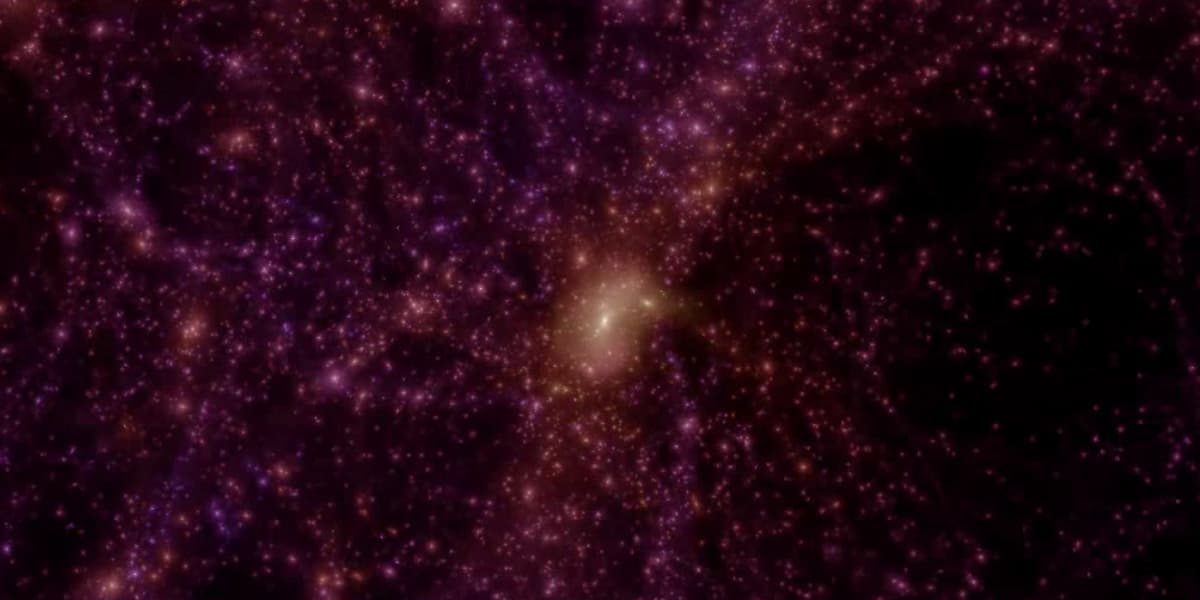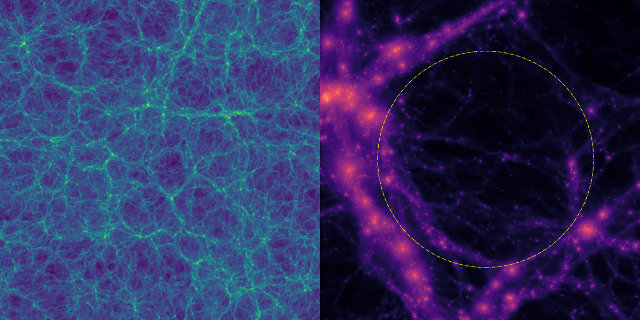Large Scale Structure
Our research centers on unraveling the formation and evolution of the cosmic web’s large-scale structures. We investigate dense regions like galaxy clusters, intermediate-density filaments threading the cosmic web, and voids with minimal galaxies.
Challenges include reconciling visible and dark matter, determining cosmological parameters describing the universe, and aligning observations with theory and simulations.
Our focus extends to understanding the universe’s components, particularly dark matter and dark energy. We explore different dark matter types, including standard cold dark matter, primordial black holes, and candidates like milicharged dark matter, to discern their effects and implications.
Key words: large-scale structure of Universe – galaxies: halos – cosmological parameters – methods: numerical – methods: statistical – Dark matter Dark Energy – Alternative models of gravity – Primordial black holes Black holes
Highlights
Córdoba is home to the largest community of researchers dedicated to exploring the large-scale structure of the Universe and cosmology in the country. This field includes figures as Diego García Lambas, Manuel Merchán, and Nelson Padilla. Julio Navarro, Laura Sales and Ariel Sanchez obtained their doctoral degrees at our institution.
Our strength lies in leveraging extensive simulations and galaxy catalogs, fostering global-level discourse. Notably, we contribute to the field through computational advancements—algorithms and catalogs—released for shared utilization, reinforcing collaborative progress within the scientific community.
We have pioneered the development of diverse identifiers for galaxy groups and cosmic structures, including voids, filaments, and dense regions. Our algorithms unlock crucial insights into matter distribution, cosmological parameters, and galaxy evolution across varied scenarios.
We have several collaborations in place:
- We are members of the LACEGAL network funded by the EU, that fosters exchange and internships between IATE and institutes in Europe, including Durham University, the Max Planck Institute for Extraterrestrial Physics, and Leiden Observatory, with whom we carry out most of our collaborations within LACEGAL.
- The ODIN collaboration: this collaboration performs observations in tailor made narrow band filters to obtain samples of Lyman alpha emitter galaxies at three specific redshifts, z=2.4, 3.1, 4.5, with little projection effects and contamination.
- Rubin Observatory of Space and Time: IATE is part of the Rubin observatory thanks to its in-kind contribution of computing personnel and robotic telescope time, via which we will have access to the Legacy Survey of Space and TIme (LSST).


